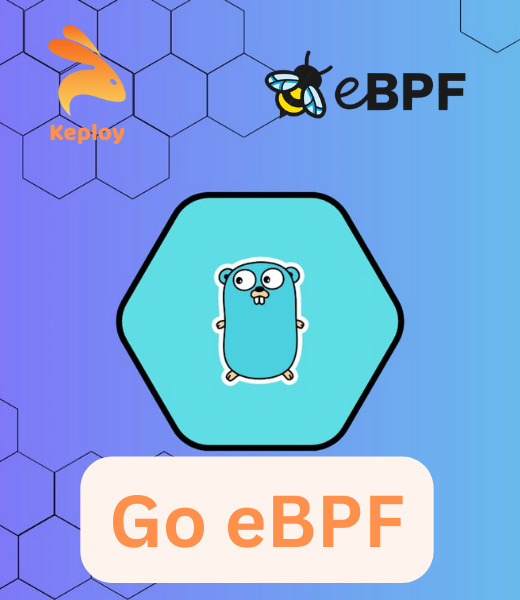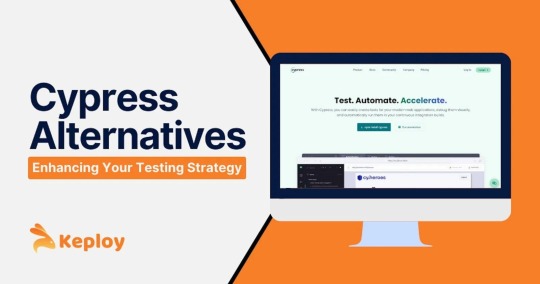#e2e test
Text
Connecting the Dots: A Comprehensive History of APIs

The term "Application Program Interface" first appeared in a paper called Data structures and techniques for remote computer graphics presented at an AFIPS (American Federation of Information Processing Societies) conference in 1968. It was used to describe the interaction of an application with the rest of the computer system.
In 1974,history of apis was introduced in a paper called The Relational and Network Approaches: Comparison of the Application Programming Interface. APIs then became part of the ANSI/SPARC framework. It's an abstract design standard for DBMS (Database Management Systems) proposed in 1975.
By 1990, the API was defined simply as a set of services available to a programmer for performing certain tasks. As Computer Networks became common in the 1970s and 1980s, programmers wanted to call libraries located not only on their local computers but on computers located elsewhere.
In the 2000s, E-Commerce and information sharing were new and booming. This was when Salesforce, eBay, and Amazon launched their own APIs to expand their impact by making their information more shareable and accessible for the developers.
Salesforce, in 2000, introduced an enterprise-class, web-based automation tool which was the beginning of the SaaS (Software as a Service) revolution.
eBay's APIs in 2000 benefited how goods are sold on the web.
Amazon, in 2002, introduced AWS (Amazon Web Services) which allowed developers to incorporate Amazon's content and features into their own websites. For the first time, e-commerce and data sharing were openly accessible to a wide range of developers.
During this time, the concept of REST (Representational State), a software architectural style, was introduced. The concept was meant to standardize software architecture across the web and help applications easily communicate with each other.
As time passed, APIs helped more and more people connect with each other. Between 2003 and 2006, four major developments happened that changed the way we use the internet.
In 2003, Delicious introduced a service for storing, sharing, and discovering web bookmarks. In 2004, Flickr launched a place to store, organize, and share digital photos online from where developers could easily embed their photos on web pages and social media. These two quickly became popular choices for the emerging social media movement.
In 2006, Facebook launched its API which gave users an unpredictable amount of data from photos and profiles information to friend lists and events. It helped Facebook become the most popular social media platform of that time. Twitter, in the same year, introduced its own API as developers were increasingly scraping data from its site. Facebook and Twitter dominated social media, overtaking the population of which APIs were the backbone. At the same time, Google launched its Google Maps APIs to share the massive amount of geographical data they had collected.
By this time, the world was shifting towards smartphones, people were engaging more and more with their phones and with the online world. These APIs changed the way how people interacted with the internet.
In 2008, Twilio was formed and it was the first company to make API their entire product. They had introduced an API that could communicate via5 phone to make and receive calls or send texts.
In 2010, Instagram launched its photo-sharing app which became popular within a month as social media was booming. Later, as users complained about the lack of Instagram APIs, they introduced their private API.
By this time, developers had also started to think of IoT (Internet of Things), a way to connect our day-to-day devices with the internet. APIs started to reach our cameras, speakers, microphones, watches, and many more day-to-day devices.
In 2014, Amazon launched Alexa as a smart speaker which could play songs, talk to you, make a to-do list, set alarms, stream podcasts, play audiobooks, and provide weather, traffic, sports, and other real-time updates as you command.
In 2017, Fitbit was established which delivered a wide range of wearable devices that could measure our steps count, heart rate, quality of sleep, and various other fitness metrics. It connected our health with the cloud.
As we began connecting increasingly with the internet, privacy and security concerns started to show up. The year 2018 was the year of privacy concerns. People started to think about their data being shared among large organizations without their permission and it could be misused.
An example of users' data being misused could be Facebook's API when one developer discovered that they could use their API to create a quiz that collected personal data from Facebook users and their friend networks and then sold that data to a political consulting firm. This scandal exposed the Dark side of APIs. This made users realize that these APIs aren't free, these large organizations are earning by selling their data with other organizations. In the year 2020, people started to see Web3.0 as a solution to all the privacy concerns as it is based on Blockchain.
As the world is progressing, we are becoming more and more dependent on these APIs to make our lives comfortable. There is still a lot that we are yet to know about the limits of APIs. The future definitely has endless possibilities.
Now that the world has adopted APIs, upcoming is the era of Testing APIs. If you write APIs and are looking for a no-code tool you can check out my open-source project - Keploy.
0 notes
Text

22 notes
·
View notes
Text
"Kill yourself" is so overdone. "I hope your favourite operators' operator record consists them talking to a bunch of faceless one-off NPCs instead of any other actual characters" is real. It could happen to you.
#arknights#i wanted more bloopy in glaucus' operator record :(#i'll raise her to e2 60 for more yuribait HG don't test me#quercus' first one is also like this
34 notes
·
View notes
Text
There's probably a viable pathway into career software development by starting as a QA tester - especially if you demonstrate basic proficiency w like python or javascript (node)
#qa rly just means 'professional software user'#so if yr good on the computer but not necessarily at coding you can probably do it fine#excel experience would prob help too#particularly a lot of like e2e/full integration tests are pretty disconnected from the details of the codebase#like in web stuff its rly abt understanding html structure & ids/class names more than anything to do w js
24 notes
·
View notes
Text
Haven't seen anyone talking about this but at the beginning of the month they kinda shadowdropped a pretty big progression boost for new players with IS3 memory mapping. Because you get four T4 chips and two chip catalysts from each mission reward, and you can access both the IS2 and IS3 monthly squads, you now theoretically have access to enough resources to promote an operator of every class without having to clear the second set of chip stages. It lets you fast-track a few ops, makes those second chip stages much easier, and you only have to make it to the start of floor 3 so you don't even have to fight a boss to get them. Good stuff all around!
#arknights#integrated strategies#new player stuff#I'm actually not 100% sure this works because i can't go back and test it but I do have a friend who's a new player trying it at the moment#Update: it worked! Was a pain but they managed to E2 an operator without the T4 chip stages!
11 notes
·
View notes
Text
i know i've beeb complaining about my le job for being le hard as fuck and requiring me to work 2 hours of overtime every day, but an online tutoring company that i applied to months ago reached out saying they have an influx of students these days and asked if i wanted to talk on zoom about it and i think im going to do it. i'm going to pick up a class or two after work a few days. because if this is a good thing and it rules i could switch to this full time after jiwon and i get married while i work on setting up my private lessons instead of going to Another hagwon.
#i mean. no grading/test giving/admin work in general would be a huge step up#i spend like 5 hours a day doing that rn alongside the 6 i spend teaching#and the pay is $25/hour and half hour classes which is not bad#i think im going to at least try it. its an american company so i would be getting paid in america#so its legal for me to do while here on an e2#t
3 notes
·
View notes
Text
hmmmm.. is thaw!slime an e9 or an e1...? or an e7? but maybe i got the potential e7 core vibe bc he's a really healthy e1 (and also most likely still has a 7 fix)????
and also when i guessed e9 for him, i figured he probably has a 1 wing. but maybe it's the other way around and he has a 9 wing??? though wings are confusing sometimes (and honestly, they're relatively new in comparison to the rest of the enneagram so the stuff i'm reading doesn't even include them most of the time. + they're really divisive. some ppl in the enneagram community think that both of your type's wings have an impact on you, though maybe at different points of your life, some ppl think only one wing ever does, and some people disregard wings entirely.. im not fully sure where i stand on them yet tbh, though i do think they're interesting, even if there's not as much info about them as there is for other aspects of the enneagram.)
but like, e1s and e9s are both in the anger triad, and so they both care a lot about autonomy and control, they just get it in different ways, through their different stances. e9s withdraw to feel some kind of autonomy, while e1s try to earn/work for it.. (btw e8s are the aggressive stance, so they'll be the ones who Demand autonomy. just in case anyone was wondering)
then there's always the question of how much autistic traits play into personality traits, and how they differ (this is also a problem that i ran into when trying to type both myself and my litle brother). bc e1s like for things to be done right all the time, but an autistic sense of justice can also do that. so how much is the e1 and how much is the autism, and how can you tell the difference, yk? bc obviously not every autistic person is an e1. there's no single 'autistic' type (though there technically kinda is, since naranjo called e5 the 'autistic type', due to how they are known for having very fixed interests and not being great at or interested in socializing with other people all that much. ofc, i don't think he's saying that all autistic ppl are e5s, nor is he saying that e5s are all autistic, just that there's a lot of overlap between those traits. but comparing the enneagram to things in the dsm is honestly a whole other post in itself..) but like. it's a bit hard to have one type encapsulate a wholeass spectrum, and i've made a list on where different autistic traits and experiences can overlap with the different enneatypes.
but yeah i'm just not sure on thaw!slime's type yet lmao. he definitely hasn't shown up in the story enough times for me to actually type him with very much certainty as of rn, this is mostly just me speculating on what he Could potentially be, and pondering on where potential mistakes could be made... i guess we'll just have to wait and see :]
#thaw nation#the enneagram is great and super accurate. as long as you correctly type the person in question. therein lies the issue.#i think that's part of why ppl are skeptical of this test tbh. bc most of these online tests for the enneagram are disgustingly inaccurate#so ppl go with the wrong types for themselves and then it's not as helpful as it can be#i thought i was an e2 for the longest time (back when i didn't know anything about it).#then i actually got into it a couple years later and realized that that test i took was very inaccurate and the results skewed towards e2#ofc there are other reasons too but that was definitely my issue with it before. i was mistyped and figured that it was just a bad typology#ever spin#forgive me for any mistakes in this. it is 2 am 👍
2 notes
·
View notes
Text
Day 1 R20

#arknights#dont think I can squeeze much more out of my operators for r21 and above#maybe with a borrowed pot6 e2 90 chalter#test
8 notes
·
View notes
Photo










Elena @e3model
Makeup & hair-style Elena Zampicinici
www.ioanpilat.com
#modella#milano agency#modelll management#e2#model test#model pose#fashion shooting#makeup#hair stylist#look#mood#ioan pilat#fashion photographer
4 notes
·
View notes
Text

Experience the Future of Software Testing With KiTAP
In the ever-evolving digital realm, KiTAP revolutionizes testing autonomy. Dive into a realm of seamless, automated end-to-end testing, where human intervention becomes a thing of the past.
Escape the shackles of vendor limitations - elevate your testing strategy with KiTAP.
#KairosTech hashtag#FutureReadyKairos hashtag#KLabs hashtag#TestAutomation hashtag#Testing hashtag#Automationtool hashtag#Automation hashtag#QA hashtag#QualityAssurance hashtag#NoCode hashtag#GenAI hashtag#E2E hashtag#SlefHealing hashtag#AIPowered
0 notes
Text
Empowering Keployment with Go eBPF: The Ultimate Guide

Introduction
In today's fast-paced world of IT and cloud computing, deploying and managing applications is a crucial task. The ability to adapt to changing conditions and ensure top-notch performance and security is vital. Enter eBPF (extended Berkeley Packet Filter), a groundbreaking technology that, when paired with the Go programming language, opens up new frontiers for your deployment needs. In this article, we'll delve into the world of Go eBPF and explore how it can help you "keploy" your applications with unmatched confidence. We'll also provide practical examples of Go eBPF code to demonstrate its capabilities.
Understanding eBPF
eBPF, originally designed for packet filtering, has grown into a versatile framework that allows you to extend and customize the Linux kernel in unprecedented ways. It enables the attachment of small programs to various hooks within the kernel, enabling real-time inspection, modification, and filtering of network packets, system calls, and more. eBPF's flexibility has resulted in a wide range of applications, including monitoring, security, networking, and performance optimization.
The Power of Go
Go, often referred to as Golang, is a statically typed, compiled language developed by Google. Renowned for its simplicity, efficiency, and comprehensive standard library, Go is a popular choice for building scalable, high-performance applications. Its support for concurrent programming, combined with a strong focus on simplicity and efficiency, makes it an excellent language for developing networking tools and applications.
Go eBPF: A Potent Alliance
The synergy between Go and eBPF is a game-changer for creating, deploying, and managing applications. Here's how Go eBPF can revolutionize your deployment process:
Enhanced Performance: Go's efficiency and concurrent programming capabilities make it ideal for managing eBPF programs that analyze, optimize, and filter data in real-time. This ensures that your applications run smoothly and efficiently.
Security and Monitoring: eBPF offers powerful tools for network and system monitoring, and Go can be used to build user-friendly interfaces for visualizing the collected data. This is crucial for maintaining a secure and compliant deployment environment.
Real-time Responsiveness: eBPF enables real-time responses to network events and system issues. Go's speed and simplicity allow developers to build and deploy solutions that react to changing conditions, guaranteeing high availability and performance.
Cross-Platform Compatibility: Go's ability to compile code for multiple platforms and eBPF's integration with the Linux kernel make it possible to create cross-platform networking solutions that can be keployed across various cloud providers.
Keployment with Confidence
As a developer or system administrator, the concept of "keployment" encapsulates the idea of continuously deploying, managing, and optimizing your applications. Here's how Go eBPF empowers you to keploy your applications with confidence:
Dynamic Load Balancing: With Go eBPF, you can implement dynamic load balancing strategies that distribute incoming traffic evenly across multiple servers. This ensures high availability and optimal performance, while the dynamic nature allows you to adapt to changing traffic patterns.
Auto-Scaling: Go eBPF helps you build auto-scaling solutions that automatically adjust the number of server instances based on real-time demand. This means your deployment can handle fluctuations in user activity without manual intervention.
Distributed Monitoring: eBPF, when paired with Go, allows you to create distributed monitoring solutions that provide real-time insights into your infrastructure's health. Detect anomalies and address issues before they impact your users.
Security and Compliance: eBPF's capabilities for inspecting and filtering network traffic and system calls, along with Go's flexibility, enable you to build custom security monitoring and compliance tools. These tools help you ensure your application's security and adherence to regulatory requirements.
Customization: The flexibility of Go and eBPF empowers you to tailor your deployment to your specific needs. You can create custom modules and extensions that address the unique challenges of your application.
Practical Examples of Go eBPF
Let's dive into some practical examples of how Go eBPF can be applied to enhance your deployment strategy:
Dynamic Load Balancing:
package main
import "fmt"
func main() {
// Go eBPF code to implement dynamic load balancing
fmt.Println("Dynamic Load Balancing code goes here.")
}
Auto-Scaling:
package main
import "fmt"
func main() {
// Go eBPF code for auto-scaling
fmt.Println("Auto-Scaling code goes here.")
}
Distributed Monitoring:
package main
import "fmt"
func main() {
// Go eBPF code for distributed monitoring
fmt.Println("Distributed Monitoring code goes here.")
}
Security and Compliance:
package main
import "fmt"
func main() {
// Go eBPF code for security and compliance
fmt.Println("Security and Compliance code goes here.")
}
Custom Modules:
package main
import "fmt"
func main() {
// Go eBPF code for creating custom modules
fmt.Println("Custom Modules code goes here.")
}
These code snippets serve as a starting point for implementing Go eBPF in your deployment strategy. You can tailor and expand these examples to meet the specific needs of your application.
Conclusion
In the rapidly evolving world of application deployment, Go eBPF emerges as a game-changer. It empowers developers and system administrators to "keploy" applications with confidence, leveraging dynamic load balancing, auto-scaling, distributed monitoring, security, and customization. The practical examples provided here demonstrate the power and flexibility of Go eBPF, offering a glimpse into the possibilities it unlocks for your deployment needs. As you continue to evolve your application infrastructure, consider the advantages of Go eBPF for seamless, efficient, and secure keployment.
0 notes
Text

7 notes
·
View notes
Text
Cypress E2E Testing With React.js: Streamlining Your Testing Workflow Like a JavaScript Ninja
Navigating the intricate landscape of web development, the integration of Cypress E2E testing with React.js stands out as a powerful alliance for enhancing code quality and refining development processes. As React.js becomes the cornerstone for building modern user interfaces, the seamless compatibility with Cypress provides a compelling testing environment. Whether you're considering hiring a React.js developer or engaging a React.js development company, the synergy of these technologies offers a robust solution for end-to-end testing. This blog post will guide you through the setup process, showcasing best practices in writing Cypress tests for React components, addressing asynchronous operations, and seamlessly integrating Cypress into your continuous integration pipeline. By exploring advanced techniques and considerations for hiring React.js developers or collaborating with React.js development companies, you'll unlock the full potential of this dynamic pairing, streamlining your testing workflow and elevating the overall quality of your React.js applications.

Why Cypress? It's More Than Just a Tool, It's a Testing Experience:
Speed Demon: Unlike its sluggish competitors, Cypress runs tests directly within the browser, eliminating the need for separate test runners and shaving precious seconds (or even minutes) off your testing time.
Visualize Your Victory: Forget cryptic logs and confusing errors. Cypress boasts a beautiful, intuitive test runner that displays real-time test execution, screenshots, and detailed logs, making debugging a breeze.
Wait, You Said Automatic? Gone are the days of manually waiting for elements to load. Cypress handles asynchronous operations like a boss, automatically waiting for elements to be visible or actions to complete before proceeding.
Built for the Modern Web: Designed with modern web development in mind, Cypress seamlessly integrates with DevTools, allowing you to leverage your existing debugging skills right within the test runner.
Data-Driven Dynamo: Test different scenarios with ease using data-driven testing, ensuring your application works flawlessly under various conditions.
React.js and Cypress: A Synergy Made in JavaScript Heaven:
Built with JavaScript in Mind: Both React and Cypress share a foundation in JavaScript, making them naturally compatible. Write clear, readable tests that seamlessly interact with your React components.
Component-Level Granularity: Need to test individual React components in isolation? Cypress plays nice with React Testing Library, allowing you to focus on component behavior without relying on implementation details.
Seamless Integration: With tools like Cypress React DevTools, you can easily inspect and interact with your React application state directly from the test runner, streamlining the debugging process.
Streamlining Your Workflow: Tips for the Testing Ninja:
Start Small and Scale Up: Begin by testing key user flows and gradually expand your test coverage as your application evolves.
Organize Your Tests: Use clear naming conventions and group related tests for better maintainability and easier navigation.
Embrace Data-Driven Testing: Define reusable datasets to efficiently test multiple scenarios and edge cases.
Leverage Fixtures: Store common test data or API responses in fixtures to avoid code duplication and simplify test setup.
Record and Replay: Save time and effort by recording user interactions and replaying them as automated tests.
Integrate with CI/CD: Automate your testing pipeline by integrating Cypress with continuous integration and continuous delivery (CI/CD) tools.
Unleash the Testing Ninja Within:
By embracing Cypress and its synergy with React.js, you can transform your E2E testing workflow from a chore into a streamlined, efficient, and even enjoyable experience. So, grab your metaphorical shurikens and mask, channel your inner testing ninja, and start writing tests that would make even the most seasoned developer proud. Remember, with Cypress and React.js on your side, the path to a flawlessly tested application is yours to conquer
Frequently Asked Questions about Cypress E2E Testing with React.js:
General:
What is Cypress E2E testing? Cypress is an end-to-end testing framework specifically designed for modern web applications. It performs real browser actions, making it ideal for testing React.js apps.
Why use Cypress for React.js? Cypress offers several advantages for React testing:
Built for asynchronous apps: Cypress understands React's asynchronous nature, eliminating flaky tests due to timing issues.
Visual diffs for debugging: See exactly what changed after a test failure, making debugging faster and easier.
Developer-friendly API: The API feels natural to React developers, reducing the learning curve.
What are the benefits of using Cypress with React.js?
Reduced costs: Catching bugs early saves time and money on fixing them in production.
Improved quality: Deliver a polished, bug-free app that keeps users happy.
Faster development: Streamlined testing means quicker iterations and faster updates.
Technical:
How do I set up Cypress with React.js? Setting up Cypress is straightforward. You can find detailed instructions in the official documentation: https://docs.cypress.io/guides/overview/why-cypress
What type of tests can I write with Cypress? Cypress supports various test types, including unit, integration, and end-to-end tests.
How do I handle asynchronous actions in my tests? Cypress automatically waits for elements to load before interacting with them, simplifying test writing.
How do I debug failures in Cypress? The intuitive test runner allows you to replay tests step-by-step and pinpoint the exact issue.
Can I integrate Cypress with my CI/CD pipeline? Absolutely! Cypress seamlessly integrates with popular CI/CD tools for automated testing.
Hiring and Expertise:
Do I need to hire a React.js development company for Cypress testing? If you have an in-house development team comfortable with testing and Cypress, you can handle it yourselves. However, hiring a company with expertise in both React and Cypress testing can offer several benefits:
Proven track record and experience: They've built high-quality apps and know how to test them effectively.
Faster adoption and implementation: They can help you set up and integrate Cypress efficiently.
Ongoing support and guidance: They can provide ongoing support and answer your questions as you navigate Cypress testing.
Bonus:
Where can I find more resources on Cypress E2E testing with React.js? The official Cypress documentation is a great starting point: https://docs.cypress.io/guides/overview/why-cypress. Additionally, you can find tutorials, articles, and community forums online.
0 notes
Text
Dive into the world of E2E testing! Explore the nuances of Playwright and Cypress frameworks for comprehensive testing solutions.
Choose the right path for seamless end-to-end testing excellence.
0 notes
Text
Top 5 Alternatives to Cypress for Automated Testing

Automated testing has become an integral part of the software development lifecycle, ensuring the reliability and efficiency of applications. Cypress has gained popularity as a powerful end-to-end testing framework, known for its fast execution and real-time browser testing capabilities. However, as with any tool, there are situations where Cypress alternative solutions may better suit the specific needs of a project. In this article, we'll explore some alternatives to Cypress for automated testing.
1. Keploy
Best for automated API testing with efficient test case generation from API calls.
Keploy creates backend API tests with built-in-mocks or stubs by recording your application network calls making your testing process not only faster than unit tests but also incredibly efficient.
Turn API Calls into Test-Cases and Mocks
With Keploy, you can effortlessly record and replay intricate, distributed API flows as mocks and stubs. It's like having a time machine for your tests.
2. Puppeteer
Puppeteer, developed by Google, is a Node.js library that provides a high-level API to control headless browsers or full browsers over the DevTools Protocol. It is commonly used for browser automation, including tasks like taking screenshots, generating PDFs, and scraping data.
Unlike Cypress, Puppeteer does not focus on end-to-end testing but can be utilized for integration testing or scenarios where detailed control over the browser is required. Its integration with the Chrome browser allows for powerful manipulation of web pages.
3. TestCafe
TestCafe is a cross-browser end-to-end testing framework that does not rely on browser plugins. It supports multiple browsers out of the box and allows testing on real devices. TestCafe is known for its ease of setup, as it does not require browser plugins or WebDriver installations.
With a focus on stability and reliability, TestCafe provides automatic waiting for page elements and handles timeouts effectively. It supports various authentication mechanisms and integrates seamlessly with Continuous Integration (CI) tools.
4. Playwright
Developed by Microsoft, Playwright is a Node.js library for browser automation. It supports multiple browsers, including Chrome, Firefox, and WebKit, and provides a simple and concise API for interacting with web pages.
Playwright stands out for its ability to capture screenshots and videos during test execution, making it valuable for debugging and documentation purposes. It also supports cross-browser testing and can be integrated with various testing frameworks.
5. Nightwatch.js
Nightwatch.js is a browser automation framework built on Node.js and Selenium WebDriver. It supports end-to-end testing, allowing developers to write tests in JavaScript or TypeScript. Nightwatch.js provides a clean and concise syntax for writing tests and supports parallel test execution.
One of the advantages of Nightwatch.js is its built-in test runner and assertion library, simplifying the test creation process. It also integrates with popular Continuous Integration tools, making it suitable for automated testing in a CI/CD pipeline.
Conclusion
While Cypress has gained popularity for its speed and simplicity in end-to-end testing, there are various alternatives available, each with its strengths and use cases. The choice of a testing framework depends on the specific requirements of a project, including the need for cross-browser testing, support for different programming languages, and the level of control over browser interactions.
Teams should carefully evaluate their testing requirements, consider factors such as browser support, community support, and integration capabilities, and choose a testing tool that aligns with the goals and complexities of their project. Whether it's Selenium WebDriver, Puppeteer, TestCafe, Playwright, or Nightwatch.js, the right choice will contribute to the effectiveness and efficiency of automated testing in the software development process.
0 notes
Text
Best Strategies for Building Enterprise Applications with Angular
New Post has been published on https://www.codesolutionstuff.com/best-strategies-for-building-enterprise-applications-with-angular/
Best Strategies for Building Enterprise Applications with Angular
Popular open-source framework for creating web applications is Angular. It is widely used in enterprise applications due to its robustness, scalability, and maintainability. However, developing enterprise applications using Angular requires a strategic approach and adherence to best practices to
#Angular#Angular CLI#Best Practices#E2E Testing#Enterprise Applications#Interceptors#Lazy Loading#Modular Architecture#Reactive Forms#Strategies#Unit Testing
0 notes